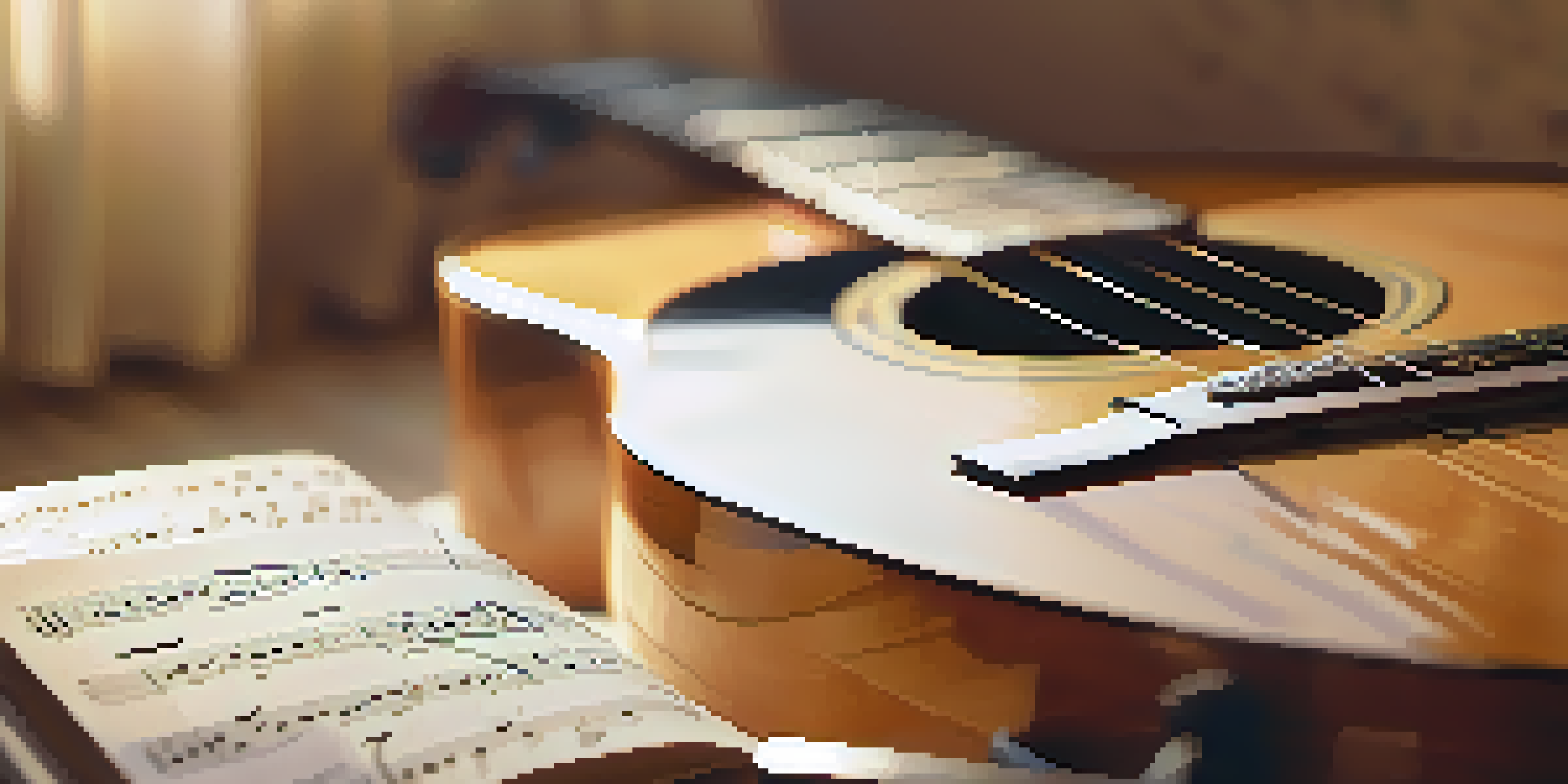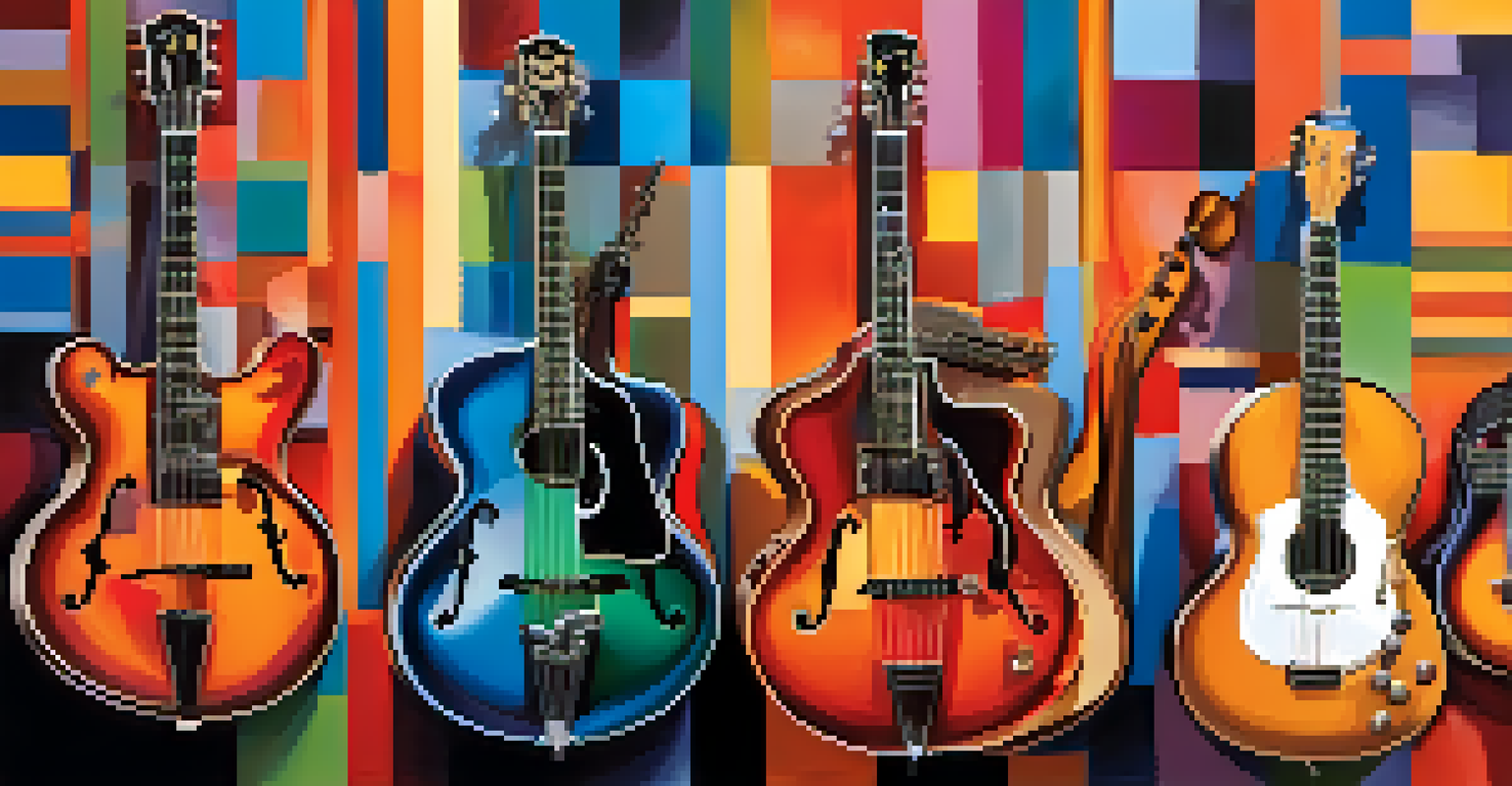Essential Techniques for Effective Guitar Transcription Skills

Understanding the Basics of Guitar Transcription
Guitar transcription is the art of translating music into written form. This process allows musicians to capture their favorite solos, riffs, or entire songs. By understanding the basics, you can improve your listening skills and become more adept at playing by ear.
The more you practice, the better you get, the more freedom you have to create.
At its core, transcription helps you internalize music theory concepts, such as scales and chord progressions. This not only enhances your playing but also deepens your appreciation for the music you love. Think of it as a bridge connecting your ears to your fingers.
As you embark on your transcription journey, remember that patience is key. The more you practice, the more comfortable you’ll become with identifying notes and rhythms. Before long, you’ll be transcribing your favorite tunes with ease!
Developing Active Listening Skills for Guitar Music
Active listening is crucial for effective guitar transcription. It involves paying close attention to the nuances of a piece, such as tone, dynamics, and phrasing. By honing this skill, you can better recognize individual notes and their relationships within a melody.

One effective way to practice active listening is to isolate specific sections of a song. Play a short segment repeatedly, focusing on one aspect at a time, like the melody or the rhythm. This method allows you to dissect the music and understand its structure more clearly.
Guitar Transcription Basics
Understanding music transcription enhances listening skills and deepens your appreciation for music.
Moreover, consider using a slow-downer app to help you break down complex passages. These tools let you adjust the speed of the track without altering the pitch. This makes it easier to catch those tricky notes that might slip by at full speed.
Utilizing Technology for Guitar Transcription
In today's digital age, technology can be a musician's best friend. Various software and apps are designed specifically for transcription, offering features like slowing down music, looping sections, and even displaying note pitches. These tools can save you time and frustration.
Music is what feelings sound like.
For instance, programs like Transcribe! or Amazing Slow Downer allow you to manipulate audio files easily. By leveraging these technologies, you can quickly pinpoint notes and improve your accuracy in transcription. It’s like having a virtual assistant for your musical endeavors!
However, while technology can aid your transcription, don't forget the importance of your own ear. Use these tools as a supplement, but strive to develop your listening skills independently. This balance will make you a more versatile musician in the long run.
Breaking Down Songs into Manageable Sections
When tackling a complex piece, breaking it down into smaller sections is essential. Start with the intro, then move on to the verse, chorus, and so forth. This chunking method prevents you from feeling overwhelmed and allows you to focus on mastering each part.
For example, if you're transcribing a solo, concentrate on just a few measures at a time. Work on playing those notes until you feel comfortable before moving on. This step-by-step approach not only simplifies the task but also reinforces your learning.
Active Listening is Essential
Developing active listening skills allows you to identify nuances in music, making transcription more effective.
Additionally, keep in mind that repetition is key. Revisit each section multiple times, gradually increasing the tempo as you become more confident. This practice not only solidifies your understanding but also enhances muscle memory.
Transcribing Various Musical Genres for Broader Skills
Exploring different musical genres can significantly enhance your transcription skills. Each genre has its unique characteristics, techniques, and common chord progressions. By transcribing across various styles, you broaden your musical vocabulary and adaptability.
For instance, the rhythmic complexities of jazz differ greatly from the straightforward patterns found in folk music. By challenging yourself with diverse genres, you develop a more versatile ear and can tackle a wider range of songs. It’s like learning new languages; each one enriches your overall communication skills.
Moreover, don’t shy away from challenging genres. If you find a complex piece in a style you’re unfamiliar with, embrace the challenge! It might take longer, but the growth you experience will be well worth the effort.
Using Notation and Tab to Document Your Transcriptions
Once you've transcribed a piece, documenting it is crucial. Using musical notation or tablature allows you to preserve your work for future reference. This not only helps you remember the notes but also serves as a valuable resource for others who may want to learn the same piece.
There are several software options available for creating notation or tabs, such as Guitar Pro or MuseScore. These programs offer user-friendly interfaces that make it easy to input notes and rhythms. Plus, they often include playback features to hear your transcription in action.
Regular Practice is Crucial
Consistent practice and documenting your transcriptions lead to significant improvements in your skills.
Remember, clear documentation is key. Ensure your notation is readable and well-organized, so you can easily revisit it later. This practice not only aids your progress but also enhances your overall musicianship.
Practicing Regularly to Enhance Your Transcription Skills
Like any skill, transcription requires consistent practice to see improvement. Set aside dedicated time each week to work on transcribing various pieces. This regular engagement keeps your skills sharp and helps you internalize the techniques you've learned.
Consider incorporating transcription exercises into your practice routine. For example, challenge yourself to transcribe a new piece every week, gradually increasing complexity. This structured approach not only keeps you motivated but also allows you to track your progress over time.

Lastly, celebrate your milestones! Whether it's completing a challenging transcription or mastering a new technique, acknowledging your achievements keeps the process enjoyable. This positive reinforcement will motivate you to continue developing your transcription skills.